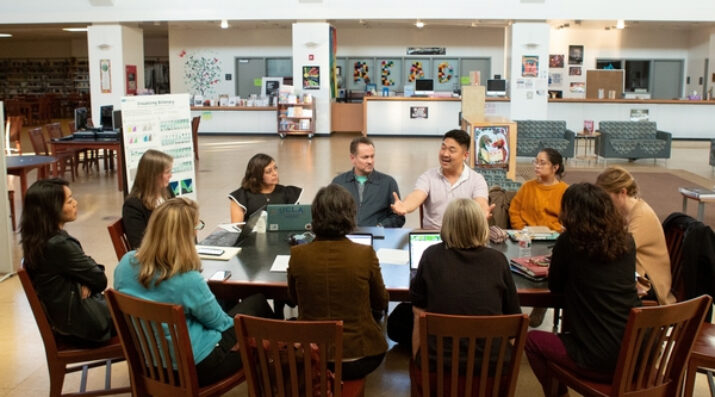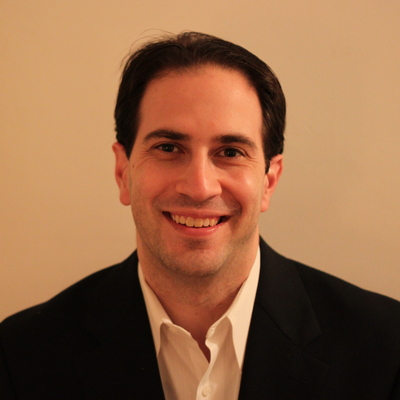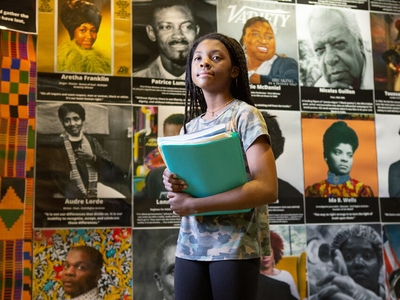Designing for Equity
Equity Work: Too Much Talk, Too Little Action
Topics

Together, educators are doing the reimagining and reinvention work necessary to make true educational equity possible. Student-centered learning advances equity when it values social and emotional growth alongside academic achievement, takes a cultural lens on strengths and competencies, and equips students with the power and skills to address injustice in their schools and communities.
To get to equity in education, we need a better balance between talk and action. And we have a real opportunity to start taking action now.
Schools are awash in equity work. It seems that every time you turn around there is another school or university that has appointed a DEI officer, is running a workshop or book club around anti-racism, or is adopting a DEI mission statement.
This is heartening. 400 years after the original sin of slavery, the bill is final coming due. Compared to the reform movement of the late 90s and 00s—where the goal was narrowly construed as equalizing test scores—the current conversation is much more wide-ranging, considering the ways in which racism is embedded in assumptions, mindsets, structures, and practices. Also heartening is the increasing examination of who is in the room, with the goal of broadening who has the power to make critical decisions.
So, what’s the problem? The problem is that the balance between talk and action is way off. White people can only unpack their privilege so many times. People of color can only listen to White people share their gradual awakenings to issues of racism and privilege so many times. This is a necessary first step, and I’m sure there are many places where it is still needs to happen. But for the rest of us, if we don’t get moving, energy will dissipate and backlash will begin.
There is no shortage of supply of equity approaches that would integrate thought and action; what is missing is the demand for such approaches, and the willingness to follow-through on the difficult action steps.
I have been part of this problem. I was running a convening for superintendents, and we did a variety of the usual equity exercises. Our time together culminated with superintendents writing an “equity statement” where they professed the ways in which they personally, and their districts as a whole, would commit to equity. There may have been some value to this—it forced them to publicly take a stand and committed us as a group as folks who were supporting equity. But this is the first step, and almost a pre-step. These were people who had a lot of power. They had the ability to detrack their schools, or shift resources to higher poverty students, or in many other ways take concrete actions that would create more equitable opportunities for students. Why so much energy on unpacking their thinking and creating “equity statements” rather than thinking through specifically what sorts of actions might actually create more equity?
I think this problem stems in part from a flawed theory of change. Very broadly, much of the equity work over the past few years, particularly those of the “White fragility” and “White privilege” variety, seems to stem from the view that a) changes in beliefs lead to changes in actions; and b) for dominant groups, understanding one’s complicity in creating racial inequality will provoke shame which will lead to changed actions. Once we unearth these theories, it is perhaps not surprising that the literature on anti-bias trainings suggests that they are on the whole mostly ineffective. In school reform more generally, we have learned that changing beliefs frequently does not lead to changes in actions, and that shaming people is not a good method for provoking sustained energy for improvement.
A better theory would recognize that change comes when actions and beliefs move in a reinforcing cycle. In this view, changes in actions lead to changes in belief, which stimulates demand for further change. Consider a young White high school teacher who is struggling with a group of adolescent students of color. She begins the year trying to replicate her own high school English classes but is unprepared for the variety of reading levels of her students. Some of her students have trouble reading the texts and disengage from the class. She tries to connect with the students by drawing on popular culture or engaging in what one of my students called “faux hood talk” which only undermines her credibility further. As her students become increasingly resistant to her teaching, she gets angrier with them, demanding more behavioral compliance and becoming more directive in her teaching. As she seeks to further control them, they resist more, and the cycle spirals downward. While she began the year full of naïve White hope, she begins to wonder whether it is the students and their families that are to blame for their lack of engagement.
How could this cycle be broken? If she went to a workshop on White privilege or how to be an antiracist, she might be reminded that she has certain advantages as a White woman that her students do not have. She might hear something about students’ “funds of knowledge” or how she should be a “culturally responsive teacher.” But none of this seems likely to get her out of the hole she has dug, and, as she continues to struggle with her students, it seems likely that her lived experience will perpetuate a deficit narrative about her students.
Now imagine that she is part of a more action-oriented PLC. She shares with some experienced teachers some of the struggles she is having with her students. A wise teacher suggests she start with just one student who she is having trouble reaching. She has a real conversation with that student, who appreciates that the teacher is making a real effort to get to know him. She asks her PLC what they have tried with struggling students, and several suggests texts, at different levels, that have tended to resonate with similar students. She offers some of these to her focal student, and she is surprised to discover that they have a mutual interest in science fiction. She asks him to do some writing in a science fiction genre and finds him much more engaged and interested in her feedback. Feeling renewed and having experienced some success, she comes to the next PLC meeting ready to learn more.
As Michael Fullan puts it, while the debate rages about whether actions precede beliefs or beliefs follow from actions, what is clear is that they have to reinforce one another in a virtuous cycle if real change is going to take place. Privileged people do have to do a lot of learning, over a long period of time, if they are going to understand the systems that perpetuate inequality and the ways they can be dismantled. Teachers like the one above do need to learn much more about their students, cultures which are not their own, and how to teach across lines of difference. People do need to look within as well as without. So it’s not that talk, reflection, reading, and learning are unimportant; to the contrary they are critical. But this learning will be much more constructive, and much more likely to be sustained, if it is interwoven with actions that lead to change. At the moment, the balance is off: too much of our current equity work is heavy on talk and short on action. We need to complete the cycle.
Making this shift would have a number of positive benefits. For White folks who are disillusioned with DEI work, it would show them the concrete benefits of doing it. For people of color, it would give them a reason to continue to show up; watching White people going on racial awareness journeys was painful in 2015 and is downright insufferable today. And for everyone, it creates opportunities to do deeper and deeper work—the early rounds will focus on the low hanging fruit, but as efforts continue, they can gradually get at the roots of our underlying problems.
There is no shortage of equity work that takes this perspective. Zaretta Hammond suggests using just the process described above, working with a focal student to prove to yourself that you can change the circumstances for that child, which in turn creates efficacy for broader change. The National Equity Project is constantly urging people to have a bias toward action; their process includes “safe to fail” experiments that allow people to make some initial changes without putting their whole organizations at risk. equityXdesign and Caroline Hill’s work revises the design process to illuminate issues of power and status and include more voices from the margins, but retains the emphasis on learning by doing. And these are just four examples. There is no shortage of supply of equity approaches that would integrate thought and action; what is missing is the demand for such approaches, and the willingness to follow-through on the difficult action steps.
Now why is that? The most obvious answer is that it takes real courage to move from talk to action. Holding workshops, forming book clubs, running professional development, and collecting data from surveys and focus groups are safe ways to do equity work. They create the appearance of action, but they almost never create substantial change in and of themselves, and worse, they can foster a false illusion of progress.
Conversely, actually doing something about equity—redistributing resources to the neediest students, hiring more people of color to be teachers and mentors for kids, detracking and unleveling students, changing curricula to be more culturally inclusive, and, most of all, distributing power more broadly—can come with significant costs. Doing any of these things will occasion pushback from those who are benefitting from existing arrangements.
At the same time, there are also significant benefits. No risk, no reward. It feels good to make progress with groups of students who have historically not succeeded. And education is not always a zero sum game—finding ways to make students feel included, to feel like they belong, to build communities that are inclusive and draw on the strengths of their various members—are approaches that will be beneficial for all students.
So, the next time you attend or organize a DEI event, ask the following questions:
- What are the action steps that follow from our discussion?
- Can we co-design with students, families, and community members to actually do something different as opposed to simply raising awareness or consciousness?
- What can we try, even on a small scale, to see whether our hunches about what might make a difference are right?
And, at the next meeting, ask:
- What did we learn from what we tried?
- If we didn’t actually do anything, why was that, and what are we going to do next time?
If, after two meetings, there has been no action, don’t go to a third one. Organize your own meeting, find some people who are actually interested in making a difference, and get cracking.
The Black Lives Matter movement has arguably been the most potent force in education (and other facets of society) over the past five years. More than the federal Department of Education, teacher evaluation, or any other initiative, it has swept across schools and districts, creating new conversations and opportunities for new commitments. In a highly decentralized system, like American education, it is often social movements that can have the most power for change, because they can manifest everywhere, in different contexts and in different ways.
And, for that reason, it is critical that we don’t squander this opportunity. Among the least committed, the moment is already passing; nice White parents who were reading How to Be an Antiracist in June were forming exclusive pods by August. But for those who are more committed to significant change, there is a real opportunity—we are in the midst of a broad racial awakening in which people from dominant groups are starting to see the inequities that have always been visible to people of color. But patience is short, institutional inertia is strong, and energy can dissipate quickly. If we don’t translate these conversations into action, we will have missed a huge chance to finally make our education system a more equitable one.
Photo at top by Allison Shelley for American Education: Images of Teachers and Students in Action: Educators from UCLA Community School discuss dual-language instruction with their colleagues.




